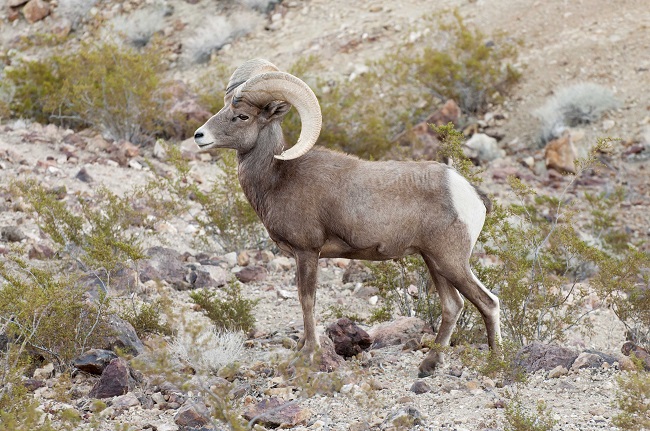
In the vast, rugged expanses of North America’s arid regions, a true icon of survival thrives—the Desert Bighorn Sheep (Ovis canadensis nelsoni). As a subspecies of the North American Bighorn Sheep, these majestic creatures have evolved to conquer the harsh conditions of desert environments, showcasing remarkable adaptations that have captured the awe and admiration of wildlife enthusiasts worldwide. In this article, we explore the natural habitat of Desert Bighorn Sheep and unveil some intriguing facts about these remarkable animals.
Natural Habitat
Desert Bighorn Sheep are primarily found in the southwestern United States and northwestern Mexico, inhabiting arid and mountainous regions. Their range extends from the Mojave and Sonoran Deserts to the lower portions of the Great Basin. These rugged terrains comprise steep canyons, rocky cliffs, and arid plateaus, making them the perfect habitat for these agile and sure-footed creatures.
One of the defining features of the Desert Bighorn Sheep’s habitat is the scarcity of water sources. However, these resilient animals have adapted brilliantly to these challenging conditions. They can obtain all the moisture they need from the vegetation they consume, thereby minimizing their need for drinking water. Additionally, Desert Bighorn Sheep are adept climbers, scaling rocky cliffs with ease to access elevated food sources and evade predators.
Interesting Facts
Iconic Horns
The most recognizable feature of Desert Bighorn Sheep is undoubtedly their formidable horns. Both males (rams) and females (ewes) possess horns, but those of the rams are more massive and curved. These horns are composed of keratin, the same material found in human hair and nails. Remarkably, the horns continue to grow throughout the sheep’s life, developing impressive curls that can span up to 30 inches.
Social Structure
Desert Bighorn Sheep exhibit a complex social structure. Rams engage in head-to-head clashes during the breeding season to establish dominance and mating rights. These fights can be intense, with the loud cracking of horns echoing through the canyons. Ewes, on the other hand, form close-knit family groups led by an experienced female.
Incredible Climbers
With their remarkable agility and balance, Desert Bighorn Sheep can navigate treacherous terrain effortlessly. They can climb slopes with steep angles and even scale near-vertical rock faces, providing them access to food sources that are inaccessible to many other animals.
Extreme Jumpers
Despite their large size, Desert Bighorn Sheep are excellent jumpers. When startled or threatened, they can leap up to 20 feet in a single bound, allowing them to escape from predators swiftly.
Survival Strategies
To endure the extreme heat of the desert, Desert Bighorn Sheep have developed various survival strategies. They can reduce their metabolic rate to conserve energy during times of limited food and water availability. Moreover, they have a specialized circulatory system that enables them to raise the temperature of their brains independently of the rest of their bodies, protecting their most vital organ from overheating.
Conservation Status
While once abundant, Desert Bighorn Sheep populations faced significant decline due to habitat loss, hunting, and diseases transmitted from domestic sheep. However, thanks to conservation efforts, their numbers have been gradually recovering in some regions.
Desert Bighorn Sheep stand as a testament to the wonders of evolution and adaptation. Their ability to thrive in the most challenging of environments showcases the resilience and magnificence of wildlife in the face of adversity. As we continue to appreciate and protect these incredible creatures and their unique habitats, we preserve a valuable part of our natural heritage and ensure that future generations can marvel at the awe-inspiring beauty of the Desert Bighorn Sheep in its rugged domain.
Related Articles & Free Email Newsletter Sign Up
The Remarkable Rise of the American Black Bear Population
The Reticulated Python: A Majestic Serpent with Ecological Consequences
Wild Boar in America: History, Impact, and Conservation Efforts


Comment here